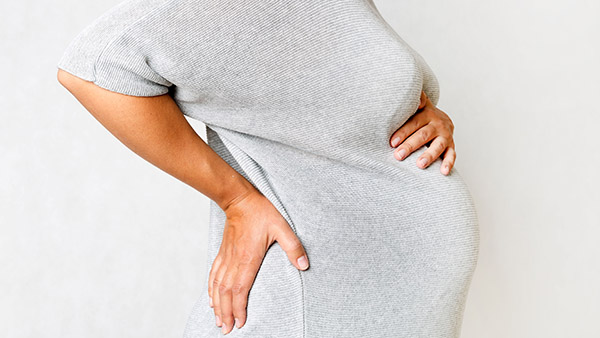Is it a Braxton Hicks contraction, a contraction, or labour pains?
During pregnancy, the uterus prepares for delivery by contracting. This process is called a contraction. But what is the difference between contractions, Braxton Hicks contractions, and labour pains?
Read time: 2 m
Verified by Jenny Jansson
Certified midwife
The uterus is a muscle that grows gradually throughout pregnancy, from being the size of a pear to being able to accommodate a fully developed child. At an early stage in the pregnancy, the uterus starts preparing for delivery with contractions.
Braxton Hicks contractions
Braxton Hicks contractions begin from different parts of the uterus. They are irregular and they do not affect the uterine tube. When you have a Braxton Hicks contraction, your stomach becomes hard and pushes out. It can feel uncomfortable but typically does not hurt. Braxton Hicks contractions disappear when you rest or relax, but some pregnant women can feel these "false" contractions even while they are resting.
The experience of Braxton Hicks contractions is individual. They can often be felt beginning at the midpoint of the pregnancy.
Contractions
When your body starts to get ready for delivery, the "real" contractions will begin. Unlike Braxton-Hicks contractions, "real" contractions are more painful – now you are in the so-called latency phase.
These contractions start from the top of the uterus and spread downwards. They get more powerful and usually last longer than Braxton Hicks's contractions. Contractions are often experienced as a sense of downward pressure, with pain that can spread out in the lower back, somewhat like severe menstrual pains. Here, too, every woman's experience is individual.
Labour pains
Sometimes it is hard to differentiate between contractions and labour pains, especially if you are a first-time mother. Some women never experience contractions – instead, the labour pains start straight away. Labour pains are more powerful and typically more painful. Your breathing can become a bit wheezy.
When you have about three contractions during 10 minutes (two contractions if this is not your first time giving birth), it's time to call the hospital. Keep in mind that approximately 10% of all deliveries start with the water breaking, so don't sit at home waiting too long.
Verified by Jenny Jansson
Certified midwife
Hundreds of related articles, podcasts & more waiting for you in the Preggers app.
Download Preggers today.

